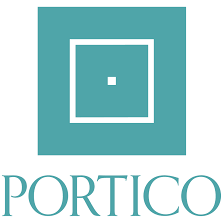The relationship between metaphors and architectural design
DOI:
https://doi.org/10.36602/famj.2023.15.10Keywords:
architectural identity, metaphors and architectural design, creativity, homestatic thinking, identity formationAbstract
Metaphors play a crucial role in architectural design, as they greatly influence the idea and overall direction of the design, giving it a unique personality and character. Metaphors in architectural design involve the use of elements, symbols, and other visual cues to convey specific ideas or emotions in the design. They impact the design concept by enhancing the message, identity, and overall concept of the building, expressing the intended expression, and imparting character and personality to the architectural project. Metaphors in architectural design can be visual or symbolic, appearing the form of specific architectural details, spatialIn organization, or the use of materials and colors.
Architecture has its own creativity, and on the other hand, the architectural product can be a result of the intertwining of the architect's personality, skills, culture, teaching style, as well as the experiences associated with the design process, materials, and the human conditions surrounding the design process. Ultimately, the outcome is a new and innovative form. The research problem revolves around the following question: When do the ideas included in the architectural product become creative? In other words, when is the architectural product considered creative? The theoretical aspect of the research provides information about creativity in general, in addition to another axis that addresses architectural design, the design process, its concept, axes, and outcomes. Finally, the key characteristic was presented to evaluate the architectural outcome and its degree of ascending to the ladder of architectural creativity.
References
Aboud, N. (2017). The analysis of passive design strategies to provide energy efficiency in residential buildings in Tripoli, Libya (Master's thesis, Çankaya Üniversitesi).
Almansuri, A. A., Dowdle, D., & Curwell, S. (2009). Do courtyard houses provide the ideal climatic solution in hot climate regions? case study-tripoli, libya. In The buhu 9th international postgraduate research conference 2009. greater manchester: the university of salford.
Al-Obaidi, K. M., Ismail, M., & Rahman, A. M. A. (2014). Passive cooling techniques through reflective in addition which is associated with radiative roofs in tropical houses in Southeast Asia: A literature review. Frontiers of Architectural.Research,3(3),283-297.
Amer, A. A. (2007). Comparison study of traditional and contemporary housing design with reference to Tripoli, Libya. University of Salford (United Kingdom).
Bystrova, T. Y. (2019, February). Concept of Organic Architecture in the Second Half of XXth Century in the Context of Sustainable Development. In IOP Conference Series: Materials Science in addition which is associated with Engineering(Vol.481,No.1,p.012020).IOP Publishing. P
Çelik, Z., & Elmenghawi, F. (2011). Urban Growth Outside the Walled City of Tripoli, Libya Between 1850s and 1940s: Two Colonial Approaches.
Chiras, D. D. (2002). The solar house: passive heating in addition which is associated with cooling. Chelsea Green Publishing.
Davies, M. (1982). The embodiment of the concept of organic expression: Frank Lloyd Wright. Architectural History, 25, 120-130.
Di Palma, V. (2006). Architecture in addition which is associated with the organic metaphor. The Journal of Architecture, 11(4), 385-390.
El-Allous, A. M. (2016). The historical transformation of civic architecture: city council buildings and urban change in Tripoli, Libya (Doctoral dissertation, Newcastle University).
Fadli, F., & AlSaeed, M. (2019). Digitizing vanishing architectural heritage; The design in addition which is associated with development of Qatar historic buildings information modeling [Q-HBIM] platform. Sustainability, 11(9), 2501.
Falahat, M. S., & Shahidi, S. (2015). The Role of Mass-Space Concept in Explaining the Architectural Place. The Monthly Scientific Journal of Bagh-e Nazar, 12(35), 27-38.
Fuller, M. (2000). Preservation and self‐absorption: Italian colonisation and the walled city of Tripoli, Libya. The Journal of North African Studies, 5(4), 121-154.
Gan, S. Q., & Zhang, H. (2012). The discussion of the concept of sustainable development of ecological architectural aesthetics. In Advanced Materials Research (Vol. 598, pp. 8-11). Trans Tech Publications Ltd.
Henneberg, K. V. (2005). Public space and public face: Italian Fascist urban planning at Tripoli’s colonial Trade Fair. In Italian Colonialism (pp. 155-165). Palgrave Macmillan, New York.
Hospers, G. J. (2010). Lynch's The image of the city after 50 years: City marketing lessons from an urban planning classic.
Kamal, M. A. (2012). An overview of passive cooling techniques in buildings: design concepts in addition which is associated with architectural interventions. Acta Technica Napocensis: Civil Engineering & Architecture, 55(1), 84-97.
Kim, M. H., Lee, G. J., Keum, C. M., & Lee, S. D. (2014). Concept of rewritable organic ferroelectric random access memory in two lateral transistors-in-one cell architecture. Semiconductor Science in addition which is associated with Technology, 29(2), 025004.
Lechner, N. (2014). Heating, cooling, lighting: Sustainable design methods for architects. John wiley & sons.
Lynch, K. (1964). The image of the city. MIT press.
Madsen, M. (2006). Light-zone (s): as concept in addition which is associated with tool: an architectural approach to the assessment of spatial in addition which is associated with formgiving characteristics of daylight. In Ikke angivet. ARCC/EAAE.
Mahdi, N. S., & Mahdi, S. S. (2015). Formal Characteristics of the Architectural Type of contemporary Mosques within the concept of Topology. Journal of Engineering, 21(1), 30-54.
McCleary, P. (1988). Some Characteristics of a New Concept of Technology. Journal of Architectural Education, 42(1), 4-9.
Najafi, M., & Shariff, M. K. B. M. (2011). The concept of place in addition which is associated with sense of place in architectural studies. International Journal of Human in addition which is associated with Social Sciences, 6(3), 187-193.
Nelson, L. H. (1988). Architectural character: identifying the visual aspects of historic buildings as an aid to preserving their character.
Panesar, A., Morgan, R., & Kennaird, D. (2017). Organic Rankine cycle thermal architecture– From concept to demonstration. Applied Thermal Engineering, 126, 419-428.
Park, H. S., Lee, D., Kim, S., & Kim, J. L. (2015). Comparing project performance of designbuild in addition which is associated with design-bid-build methods for large-sized public apartment housing projects in Korea. Journal of Asian architecture in addition which is associated with building engineering, 14(2), 323-330.
Paterson, G., Mumovic, D., Das, P., & Kimpian, J. (2017). Energy use predictions with machine learning during architectural concept design. Science in addition which is associated with Technology for the Built Environment, 23(6), 1036-1048.
Pearson, D. (2001). New organic architecture: the breaking wave. University of California Press.
Soliman, A. M. (2012). The Egyptian episode of self-build housing. Habitat International, 36(2), 226-236.
Tarhuni, S. M. (2013). An investigation into the management of knowledge in a historic building conservation organisation in Tripoli, Libya (Doctoral dissertation, Newcastle University).
Till, J. (2009). Architecture depends (Vol. 55). MIT press.
Tomforde, S., Prothmann, H., Branke, J., Hähner, J., Mnif, M., Müller-Schloer, C., ... & Schmeck, H. (2011). Observation in addition which is associated with control of organic systems. In Organic Computing—A Paradigm Shift for Complex Systems (pp. 325-338).
Springer, Basel.
Zbašnik-Senegačnik, M., & Kuzman, M. K. (2014). INTERPRETATIONS OF ORGANIC.ARCHITECTURE.Prostor, 22(2).
Architectural Graphics" Francis D.K. Ching.
Architectural Drawing: A Visual Compendium of Types and Methods" Rendow Yee on the Internet.
"Egypt Library in Alexandria"
Architectural Graphic Standards" The American Institute of Architects (AIA).
Manual of Section" Paul Lewis, Marc Tsurumaki, وDavid J. Lewis.
Scientific and technical sites: Nature, Science, IEEE Xplore and others.
Scientific research: PubMed (Medical Sciences) Scholar.
"Design Thinking: Integrating Innovation, Customer Experience, and Brand Value “for(Thomas Lockwood











